Pulao Rice recipe, also known as Pulao, is super tasty and loved everywhere! It's super easy to make, and you can add any veggies or spices you like. The best part? It soaks up all the flavors! You can enjoy it as a side dish or a yummy main meal!
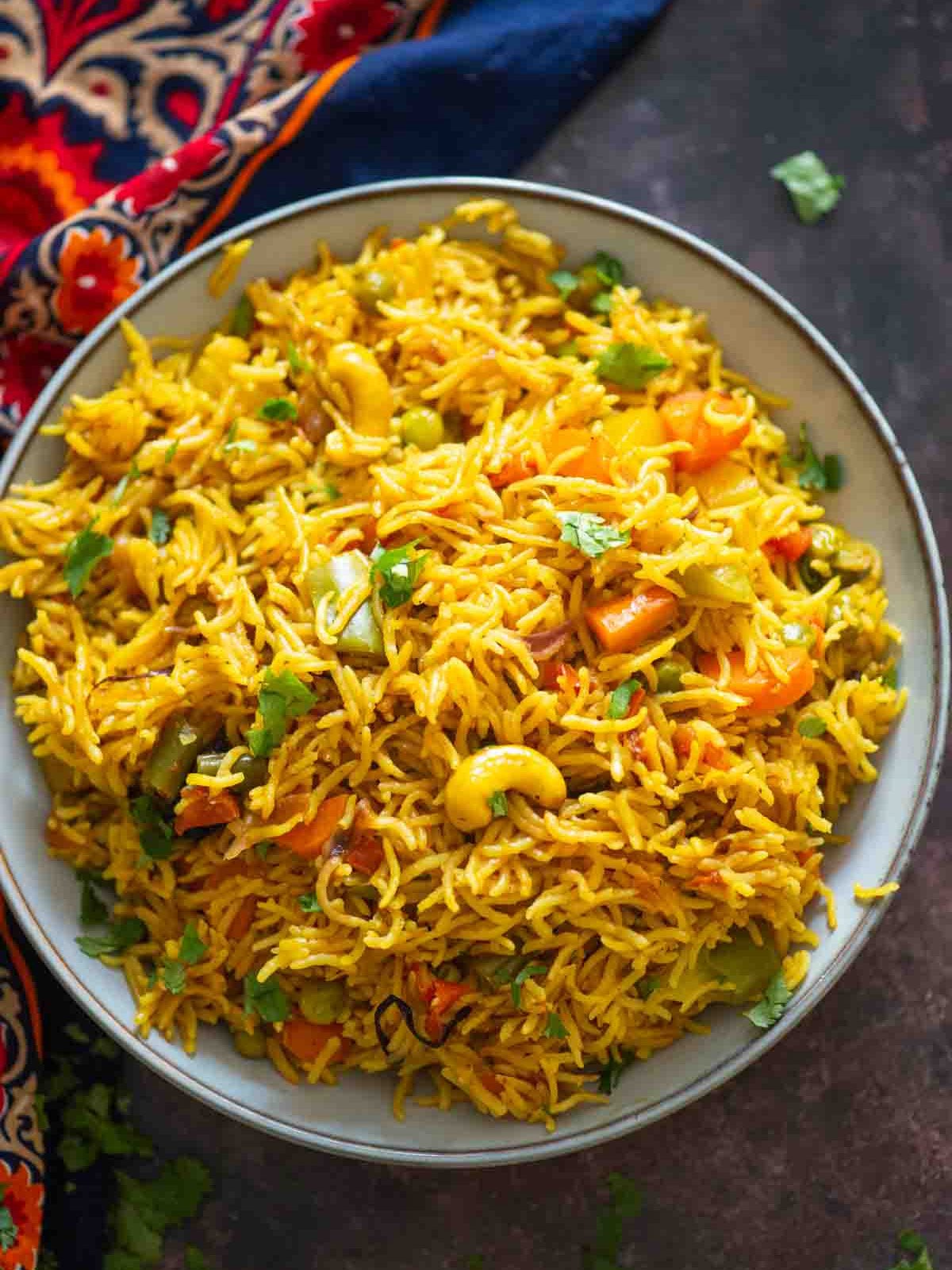
Jump to:
- About Pulao Rice
- What Makes Pulao Special?
- Pulao vs. Biryani – What’s the Difference?
- What You'll Need to Make This Pulao Recipe?
- How to Make Veg Pulao Recipe
- Flavor Variations: Customizing Your Pulao
- Pulao Pairing Suggestions
- Healthier Alternatives for Pulao
- Tips & Tricks for Perfect Pulao Every Time
- ❔FAQs
About Pulao Rice
Pulao recipe, originally from Persian cuisine, has traveled across Central Asia, India, and the world. Basically, it started as a simple dish of rice cooked with spices.
However, over time, different regions have added their own flavors and ingredients, making it unique.
For instance, in India, pulao is often rich with spices, vegetables, and sometimes meat. On the other hand, Afghan pilaf is famous for including dried fruits like raisins and apricots.
Moreover, Turkish pilaf uses butter and tomato to give it a delicious taste. Similarly, Persian polo is known for its saffron and the famous crunchy rice crust (tahdig).
All things considered, pulao has evolved into a flavorful dish enjoyed worldwide!
What Makes Pulao Special?
Pulao (or Pilaf) recipe is a special dish enjoyed worldwide. Both in India and the Middle East, it has different flavors, but all versions are packed with spices, herbs, and rice!
For example, Indian pulao recipe is rich with spices, while Middle Eastern pilaf is lighter, with a mix of herbs like saffron. Not only is it tasty, but it’s also very versatile—you can add veggies, meat, or nuts.
Above all, pulao is a comfort food! It’s easy to make, filling, and perfect for any occasion—whether for a quick lunch or a special dinner. So next time you’re hungry, think of a warm bowl of pulao!
Pulao vs. Biryani – What’s the Difference?
Firstly, pulao and biryani may seem similar, but they have key differences. Pulao is generally a one-pot dish where rice, veggies, or meat cook together with spices.
It's quick and easy! Biryani, however, is more intricate, with layers of rice and marinated meat (often cooked with yogurt and fried onions).
Another key point to remember is that biryani uses complex spices like saffron and takes longer to prepare. On the other hand, pulao is simpler and faster to make, yet still packed with flavor!
In essence, if you’re short on time, pulao is your go-to, but if you want something more festive, biryani steals the show!
Explore More of Our Tasty Delights!
- Paneer Pulao Recipe – A cheesy, aromatic rice dish for all the paneer lovers!
- Kashmiri Pulao – A fragrant, colorful blend of spices and dry fruits!
- Palak Rice Recipe – Spinach-infused goodness for a healthy twist on rice!
- Tomato Rice Recipe – Tangy and flavorful, a perfect comfort food!
- Vegetable Biryani – A wholesome, aromatic biryani loaded with veggies!
What You'll Need to Make This Pulao Recipe?
Key Ingredients:
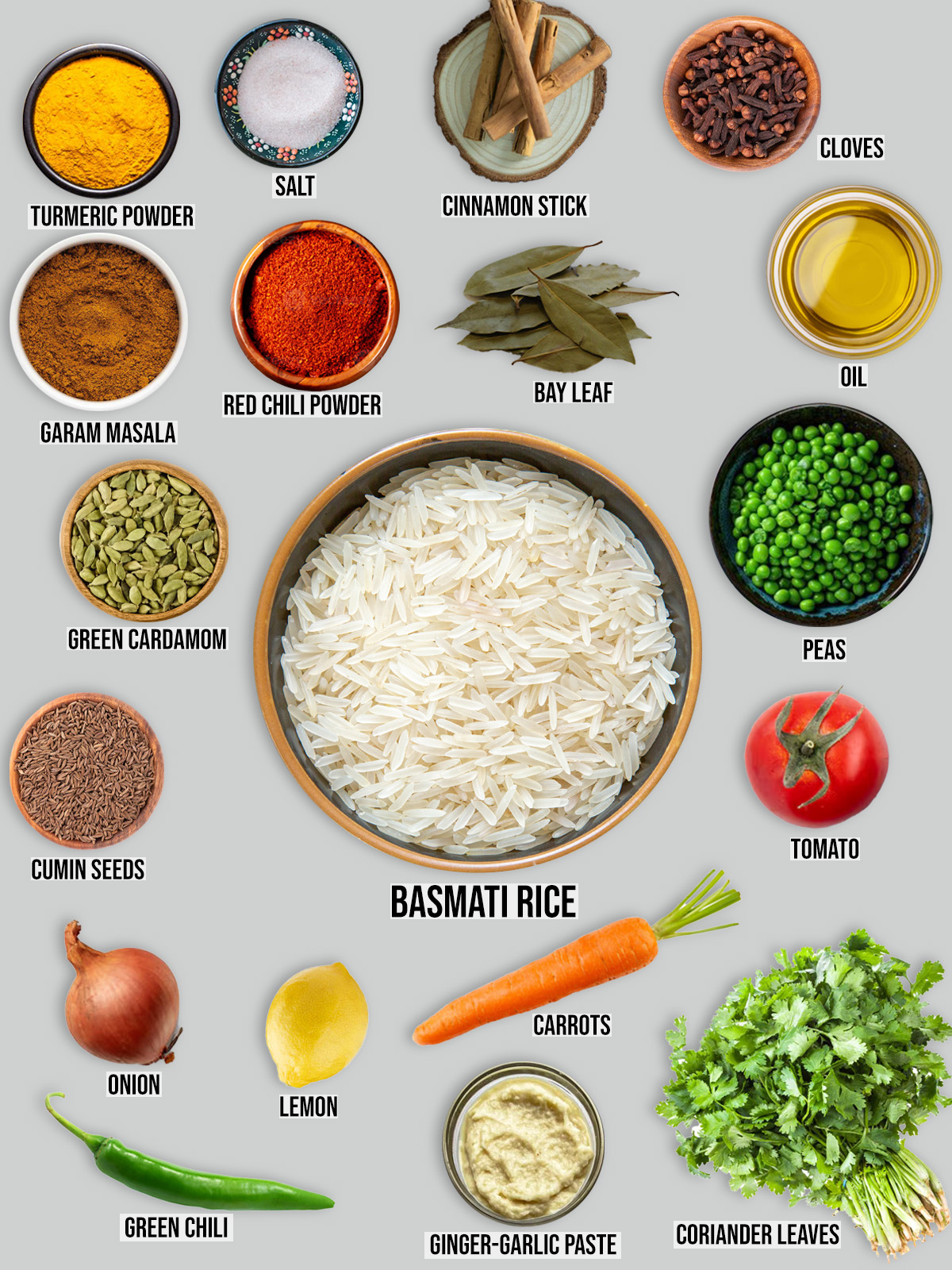
Ingredients Breakdown:
- Basmati Rice: Basmati rice is, without a doubt, the key ingredient. Long, fragrant grains that cook up fluffy and separate, it’s what makes a pulao truly special. After all, you can’t make a proper pulao without it! Basmati is truly the unsung hero of this dish.
- Ghee or Oil: Essential for that rich, aromatic base. Ghee adds a royal touch, but oil works just as well for a lighter version.
- Whole Spices (Cumin, Cardamom, Cloves, Bay Leaves): These spices give the pulao its character. The fragrance will fill your kitchen, making it impossible to wait until it’s done! "It’s amazing how a few whole spices can transform a simple dish into something extraordinary!"
- Onions: Sautéed until golden and crispy – they add a sweet, caramelized crunch to the dish.
- Vegetables (Optional)
- Carrots, peas, and potatoes are commonly added for extra flavor and color.
- Ginger-Garlic Paste: The aromatic base that gives the pulao a rich, savory depth. It’s hard to imagine a pulao without ginger-garlic paste – it's the duo that never fails!
- Water or Broth: The liquid that brings everything together and cooks the rice to perfection.
- Cilantro and Mint: Garnish with fresh cilantro and mint for that final pop of freshness and aroma. Moreover, this adds a burst of color and a delightful fragrance that takes your pulao to the next level!
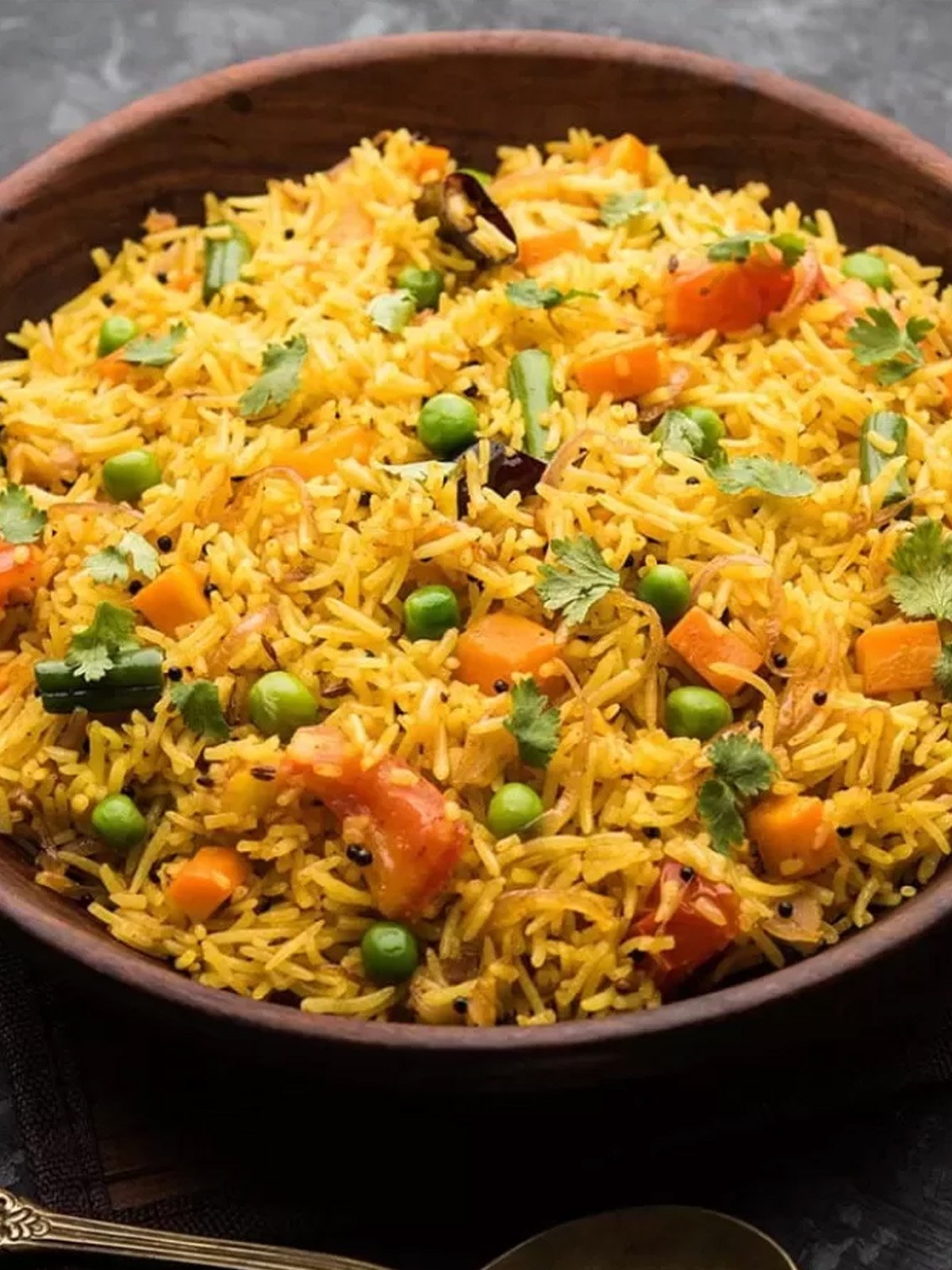
How to Make Veg Pulao Recipe
Step by Step Instructions
1. Rinse the Rice
- First, rinse 1 cup of basmati rice under cold water until the water runs clear. This step removes excess starch. If you have time, soak it for 20-30 minutes, then drain.
2. Prepare the Ingredients
- Next, slice the onion thinly, chop the tomato, and dice the mixed vegetables. This way, all your ingredients are ready for the next steps!
3. Heat Oil/Ghee
- First, in a large pan or pressure cooker, heat 2 tablespoons of cooking oil or ghee over medium heat. This will prepare the base for your cooking!
4. Cook Whole Spices
- Then, add 1 teaspoon of cumin seeds, 2-3 cloves, 2 green cardamom pods, a 1-inch cinnamon stick, and 1 bay leaf to the hot oil. Sauté for 1-2 minutes until fragrant.
5. Add Onions
- After that, add the sliced onions and sauté until they turn golden brown (about 5-7 minutes).
6. Add Ginger-Garlic Paste
- Now, stir in 1 tablespoon of ginger-garlic paste and cook for another 1-2 minutes until the raw smell disappears.
7. Add Tomatoes and Spices
- Next, add the chopped tomatoes, ¼ teaspoon turmeric powder, ½ teaspoon red chili powder, and salt to taste. Cook until the tomatoes become soft and the oil separates (about 5 minutes).
8. Add Vegetables
- Then, stir in the mixed vegetables and cook for 3-4 minutes.
9. Add Rice and Water
- Now, gently add the drained rice to the pan and mix it with the vegetables and spices. Pour in 1.5 cups of water and add ½ teaspoon of garam masala if you like.
10. Cook the Pulao
- Bring the mixture to a boil. After that, reduce the heat to low, cover the pan, and let it simmer for 15-20 minutes, or until the rice is cooked and the water is absorbed. If you’re using a pressure cooker, close the lid and cook on low heat for 1 whistle. Then, turn off the heat and let it sit for 5 minutes before opening.
11. Garnish and Serve
- Finally, fluff the rice with a fork, garnish with chopped coriander leaves, and squeeze a bit of lemon juice if using.
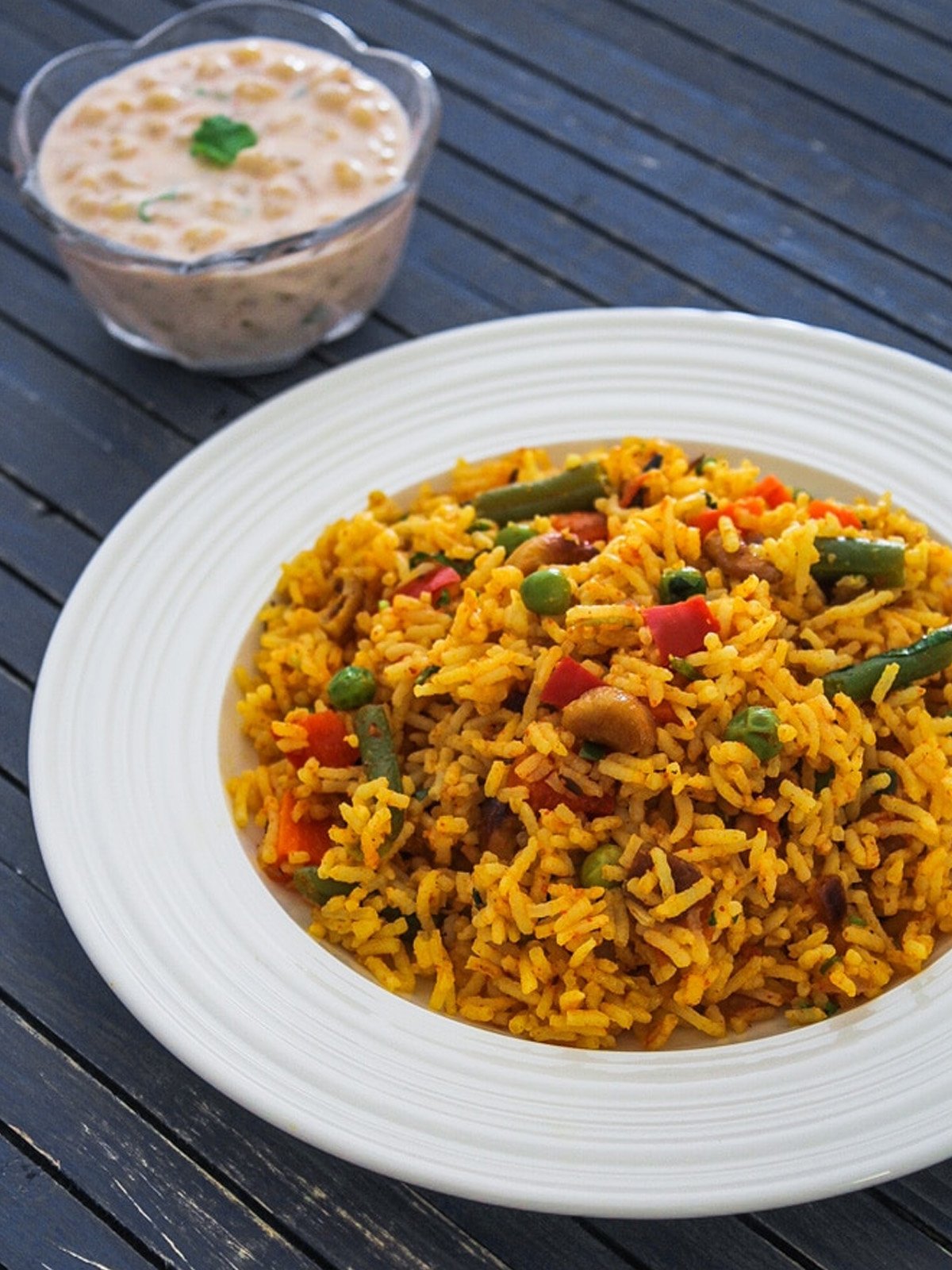
Flavor Variations: Customizing Your Pulao
1. Coconut Pulao: For a richer flavor, add coconut milk, giving it a creamy South Indian twist.
2. Vegetable Pulao: Additionally, incorporate seasonal veggies like pumpkin, spinach, or mushrooms to make the dish colorful and healthy.
3. Kashmiri Pulao: Use saffron, yogurt, and dried fruits for a sweet, aromatic treat perfect for special occasions.
4. Spicy Pulao: For an extra kick, turn up the heat with green chilies, red chili powder, and garam masala, adding bold flavor to your dish.
5. Biryani-Inspired Pulao: Alternatively, infuse biryani spices or layer with fried onions to achieve that rich, biryani-like flavor.
6. Protein-Infused Pulao: Alternatively, add chicken, mutton, or prawns for a hearty, protein-packed version.

Pulao Pairing Suggestions
- Grilled Meats: If your pulao is vegetarian, pair it with grilled chicken or kebabs for a complete, hearty meal.
- Raita: Additionally, pair pulao with a cool raita, such as boondi, onion-cucumber, or spicy mint, to balance the flavors.
- Pickles & Chutneys: Furthermore, add tangy mango pickle or sweet tamarind chutney to bring out an extra zing!
- Papadums: Serve crispy papads on the side for a satisfying crunch.
Healthier Alternatives for Pulao
- Low-Fat Pulao: For a lighter version, use olive oil or coconut oil instead of ghee. You can also reduce the oil used in the recipe to keep it low-fat and just as flavorful.
- Low-Calorie Pulao: Use brown rice or quinoa instead of white rice. These grains are fiber-rich and provide a healthier, low-calorie alternative, making your pulao even more nutritious.
- Vegan and Gluten-Free Options: To make your pulao vegan, simply substitute vegetable stock for chicken stock and tofu for dairy ingredients. Gluten-free too, so everyone can enjoy!
Tips & Tricks for Perfect Pulao Every Time
1. Avoid Mushy Rice: To keep your rice fluffy, soak it beforehand and use the right water-to-rice ratio. If you do this, the rice will cook just right, not too soft.
2. Flavor Infusion: Tempering spices in ghee before adding rice ensures even coating, giving the rice a rich, flavorful base. This helps infuse the spices deeply!
Alternative Cooking Methods:
- Pressure Cooker Method: If you're in a hurry, the pressure cooker gives you fluffy pulao in no time.
- Stovetop Dum Method: For the perfect soft, aromatic finish, cook the rice on low heat. This lets the flavors meld together beautifully.
3. Choosing the Right Fat: The fat you use affects the flavor. Ghee adds richness, vegetable oil is neutral, and coconut oil brings a tropical twist. Pick wisely based on the flavor you're after!
Did you try this Pulao recipe? Leave a ⭐️⭐️⭐️⭐️⭐️ rating below and share it on Instagram, Facebook, and Pinterest!
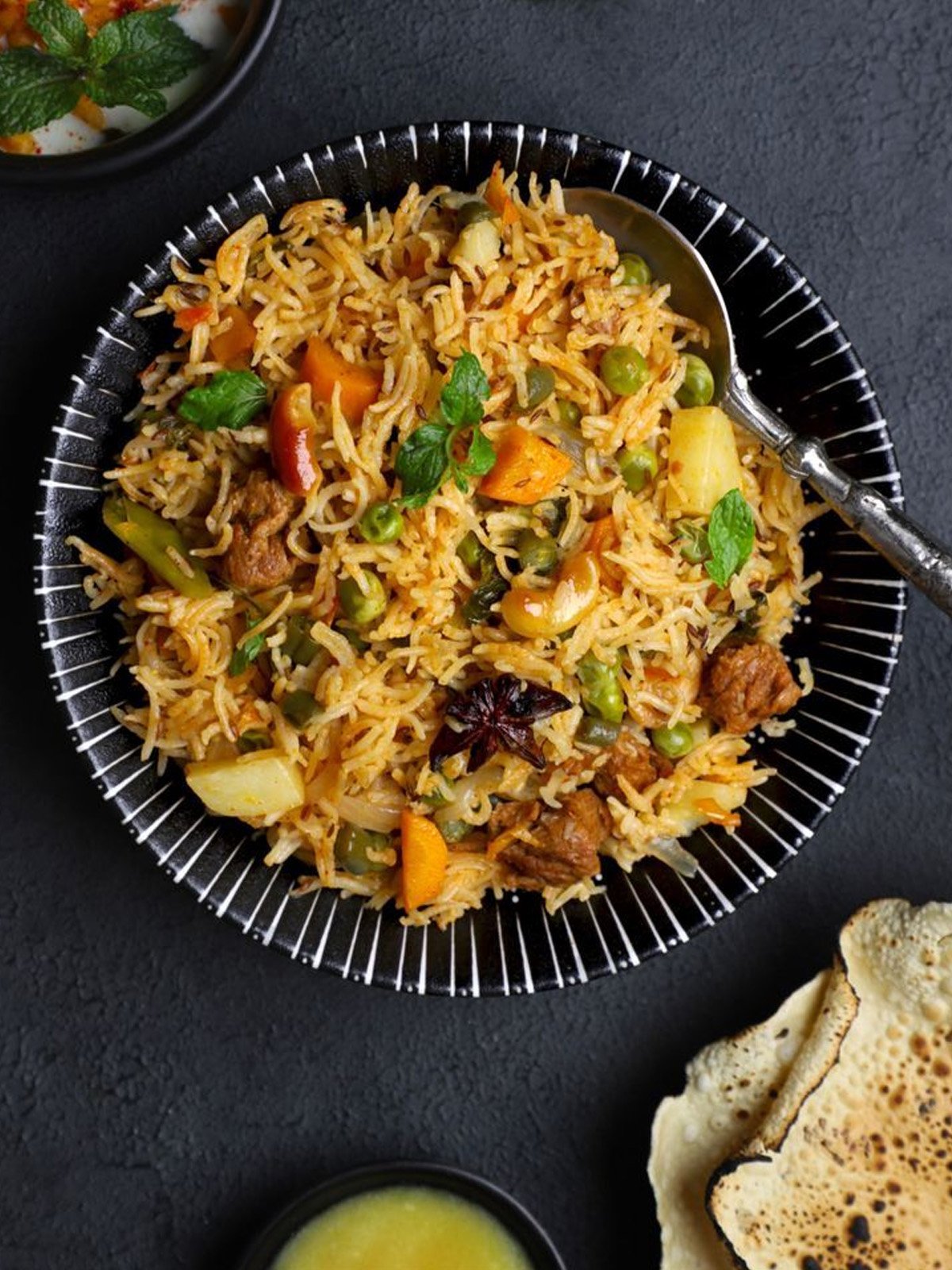
❔FAQs
Common vegetables for vegetable pulao include peas, carrots, beans, potatoes, and bell peppers. You can also add mushrooms or corn for additional flavor and variety.
In a pressure cooker, sauté the spices and aromatics first, then add the rice and vegetables. Pour in the water, close the lid, and cook on low heat for 1 whistle. Let the pressure release naturally before opening the lid.
Yes, you can prepare pulao rice ahead of time. Store it in an airtight container in the refrigerator. To reheat, sprinkle a little water over the rice and heat it gently on the stove or in a microwave, stirring occasionally to prevent drying out.
Essential spices for pulao rice include cumin seeds, cloves, green cardamom, cinnamon, and bay leaf. You can also use ground spices such as turmeric, red chili powder, and garam masala for additional flavor.
Common mistakes include not rinsing the rice properly, using too much water, and overcooking the rice. Also, avoid stirring the rice too much during cooking, as this can cause it to become sticky.
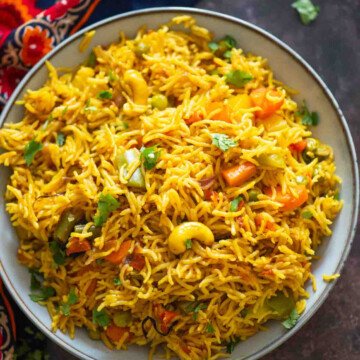
Pulao Recipe
Ingredients
- 1 Cup Basmati rice
- 1.5 Cup Water
- 1 Onion medium, finely sliced
- 1 Tomato medium, chopped
- 1 Green chili slit (optional, for heat)
- 1 tablespoon Ginger-garlic paste
- 1 Cup Mixed vegetables (carrots, peas, beans, etc.), diced
- 2 tablespoon Cooking oil or ghee
Whole spices:
- 1 teaspoon Cumin seeds
- 2-3 Cloves
- 2 Green cardamom
- 1 Cinnamon stick inch piece
- 1 Bay leaf
Ground spices:
- ¼ teaspoon Turmeric powder
- ½ teaspoon Red chili powder
- ½ teaspoon Garam masala
- Salt to taste
- Fresh coriander leaves a handful, chopped (for garnish)
- 1 teaspoon Lemon juice (optional)
Instructions
Rinse the Rice
- First, rinse 1 cup of basmati rice under cold water until the water runs clear. This step removes excess starch. If you have time, soak it for 20-30 minutes, then drain.
Prepare the Ingredient
- Next, slice the onion thinly, chop the tomato, and dice the mixed vegetables. This way, all your ingredients are ready for the next steps!
Heat Oil/Ghee
- First, in a large pan or pressure cooker, heat 2 tablespoons of cooking oil or ghee over medium heat. This will prepare the base for your cooking!
Cook Whole Spices
- Then, add 1 teaspoon of cumin seeds, 2-3 cloves, 2 green cardamom pods, a 1-inch cinnamon stick, and 1 bay leaf to the hot oil. Sauté for 1-2 minutes until fragrant.
Add Onions
- After that, add the sliced onions and sauté until they turn golden brown (about 5-7 minutes).
Add Ginger-Garlic Paste
- Now, stir in 1 tablespoon of ginger-garlic paste and cook for another 1-2 minutes until the raw smell disappears.
Add Tomatoes and Spices
- Next, add the chopped tomatoes, ¼ teaspoon turmeric powder, ½ teaspoon red chili powder, and salt to taste. Cook until the tomatoes become soft and the oil separates (about 5 minutes).
Add Vegetables
- Then, stir in the mixed vegetables and cook for 3-4 minutes.
Add Rice and Water
- Now, gently add the drained rice to the pan and mix it with the vegetables and spices. Pour in 1.5 cups of water and add ½ teaspoon of garam masala if you like.
Cook the Pulao
- Bring the mixture to a boil. After that, reduce the heat to low, cover the pan, and let it simmer for 15-20 minutes, or until the rice is cooked and the water is absorbed. If you’re using a pressure cooker, close the lid and cook on low heat for 1 whistle. Then, turn off the heat and let it sit for 5 minutes before opening.
Garnish and Serve
- Finally, fluff the rice with a fork, garnish with chopped coriander leaves, and squeeze a bit of lemon juice if using.
Notes
Flavor Variations: Customizing Your Pulao
1. Coconut Pulao: For a richer flavor, add coconut milk, giving it a creamy South Indian twist. 2. Vegetable Pulao: Additionally, incorporate seasonal veggies like pumpkin, spinach, or mushrooms to make the dish colorful and healthy. 3. Kashmiri Pulao: Use saffron, yogurt, and dried fruits for a sweet, aromatic treat perfect for special occasions. 4. Spicy Pulao: For an extra kick, turn up the heat with green chilies, red chili powder, and garam masala, adding bold flavor to your dish. 5. Biryani-Inspired Pulao: Alternatively, infuse biryani spices or layer with fried onions to achieve that rich, biryani-like flavor. 6. Protein-Infused Pulao: Alternatively, add chicken, mutton, or prawns for a hearty, protein-packed version.Tips & Tricks for Perfect Pulao Every Time
1. Avoid Mushy Rice: To keep your rice fluffy, soak it beforehand and use the right water-to-rice ratio. If you do this, the rice will cook just right, not too soft. 2. Flavor Infusion: Tempering spices in ghee before adding rice ensures even coating, giving the rice a rich, flavorful base. This helps infuse the spices deeply! Alternative Cooking Methods:-
- Pressure Cooker Method: If you're in a hurry, the pressure cooker gives you fluffy pulao in no time.
-
- Stovetop Dum Method: For the perfect soft, aromatic finish, cook the rice on low heat. This lets the flavors meld together beautifully.


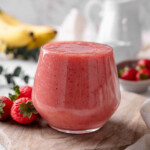

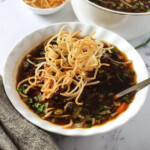





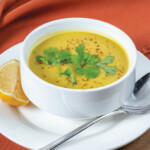

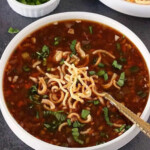
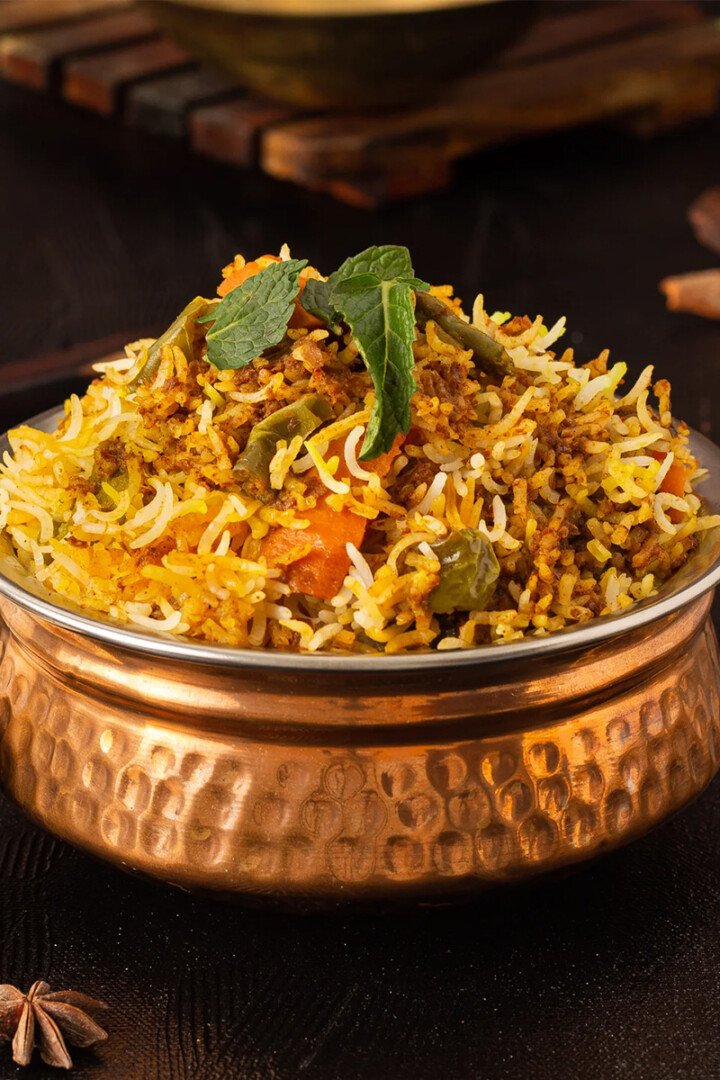
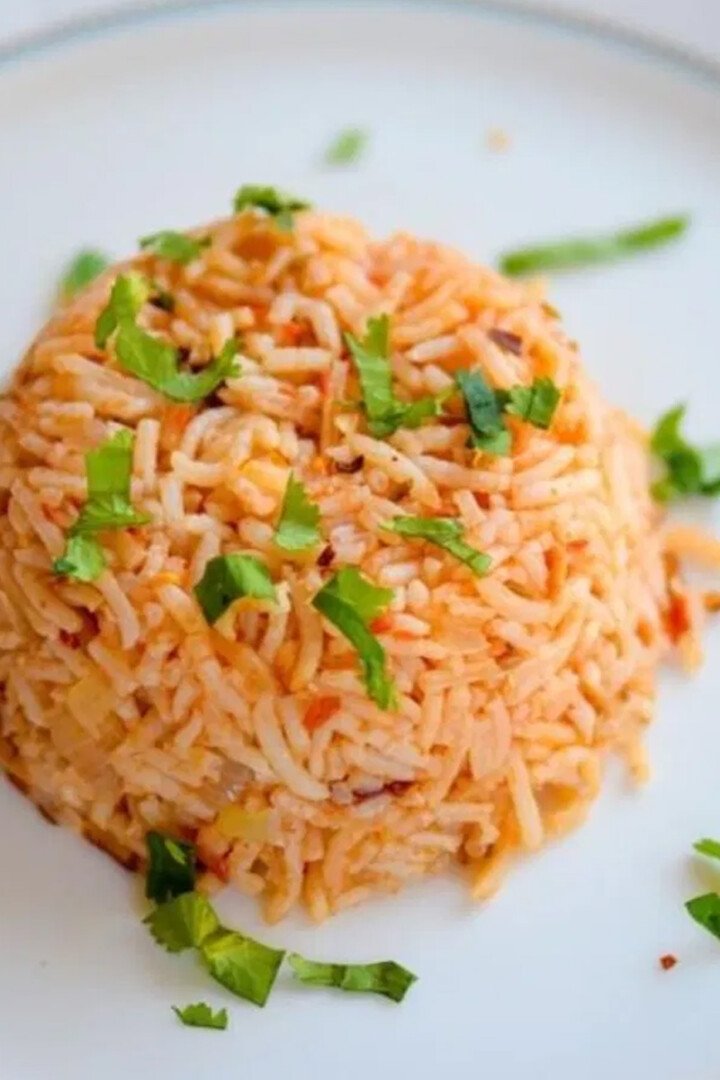
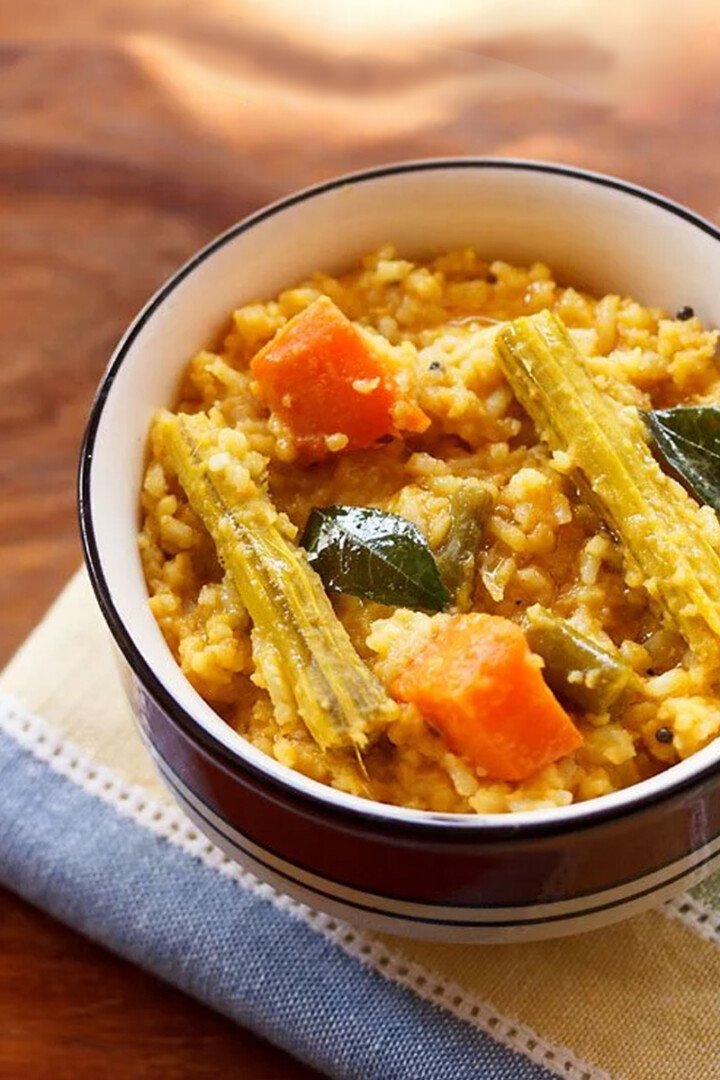
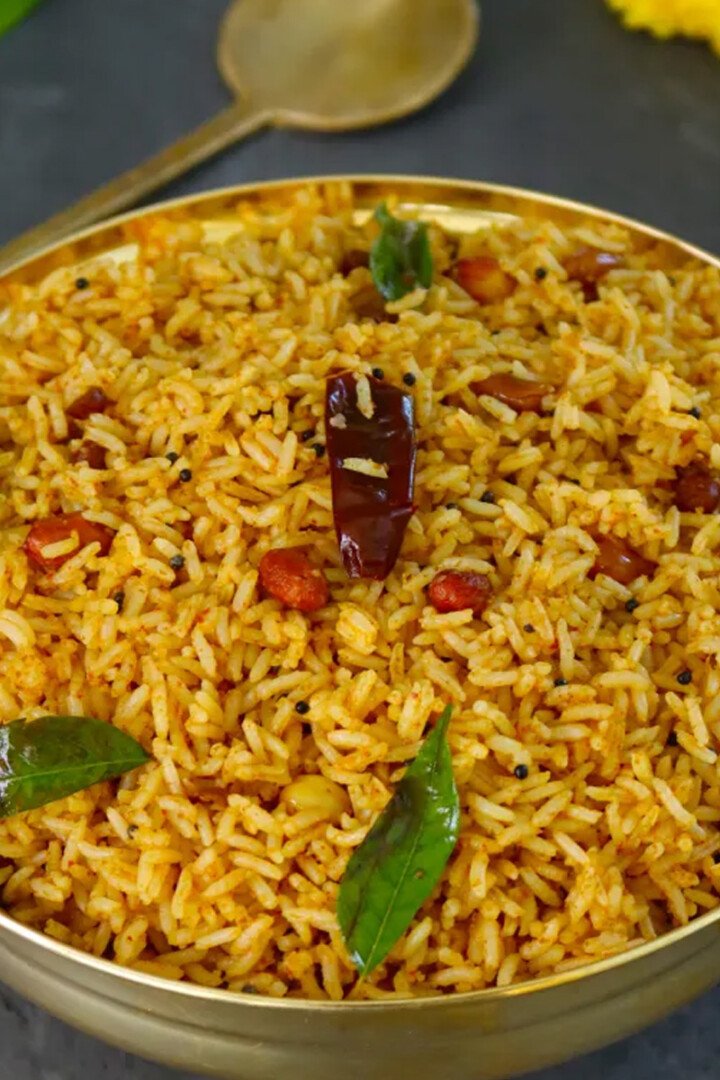
Leave a Reply